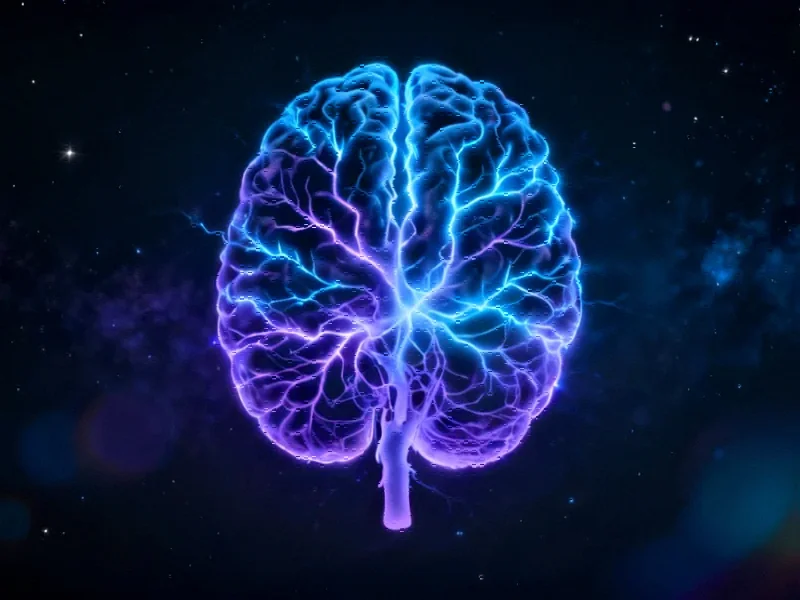The New Frontier in Brain Research
Recent breakthroughs in neurophysiological research are transforming our understanding of brain complexity through innovative statistical approaches. A groundbreaking study published in Scientific Reports demonstrates how q-statistical analysis of electroencephalogram (EEG) signals provides unprecedented insights into neural organization and cognitive processing. This methodology represents a significant advancement beyond traditional statistical models, offering researchers new tools to decode the brain’s intricate workings.
Understanding Neural Complexity Through q-Statistics
The study examined 70 adult subjects, assessing neural complexity (NC) via the q-parameter of q-statistics applied to ongoing EEG signals across 20 scalp channels. Researchers evaluated NC both globally across all channels and locally for individual channels during different functional states. The findings revealed that q-values across all functional states were consistently higher for global channel analysis compared to single-channel assessments, highlighting the importance of comprehensive measurement approaches in understanding brain dynamics.
Consistent with previous research, the study confirmed a negative correlation between neural complexity and age, suggesting measurable changes in brain organization throughout the lifespan. While functional states didn’t influence q-values in global channel analysis, local assessments showed consistent modulation patterns. For instance, posterior sites demonstrated reduced q-values during eyes-closed states, indicating region-specific complexity variations.
The Science Behind Complex Systems
Complex systems, including the human brain, exhibit unique properties that distinguish them from simple systems. Unlike ideal gas molecules that display chaotic fluctuations without long-range correlations, complex systems maintain integrated networks where components preserve their singularity while contributing to collective behavior. This fundamental characteristic requires non-additive entropy measures, which traditional Boltzmann-Gibbs statistical mechanics cannot adequately address.
The emergence of brain complexity measurement through EEG analysis represents a significant milestone in computational neuroscience. Tsallis’ development of non-extensive statistical mechanics (NESM) in 1988 provided the mathematical foundation for modeling these complex systems through q-statistics. The q-exponential function captures the essential dynamics of complex systems, with the q-parameter serving as a direct correlate of system complexity and information content.
Methodological Innovations in EEG Analysis
The research team employed sophisticated analysis techniques, studying the frequency distribution of time intervals between amplitudes exceeding -1.0 standard deviation thresholds. This approach demonstrated that q-statistics, unlike traditional methods, effectively models inter-event interval distributions in EEG signals. The sensitivity of q-statistics proved sufficient to differentiate between various mental profiles, including distinguishing children with ADHD from typically developing children through specific parameter combinations (q, c).
These findings align with broader industry developments in neurological assessment and monitoring technologies. The ability to quantify neural complexity through non-invasive EEG measurements opens new possibilities for clinical applications and cognitive research.
Practical Applications and Future Directions
The correlation patterns observed in the study provide crucial insights into brain function. Researchers found positive correlations between q-values and theta band power (4-8Hz), while negative correlations emerged with beta band power (15-25Hz). These relationships suggest greater neural complexity during states such as music listening and eyes-open resting, consistent with high-order cognitive representations rather than low-informational attentional tasks.
As related innovations in computational analysis continue to evolve, the potential applications of q-statistical EEG analysis expand across multiple domains. From clinical diagnostics to cognitive enhancement technologies, this methodology promises to revolutionize how we understand and interact with brain complexity.
Integration with Current Technological Trends
The advancement of q-statistical analysis coincides with significant progress in computational hardware and software capabilities. The growing sophistication of recent technology enables researchers to process complex EEG data with unprecedented speed and accuracy. These technological synergies are accelerating our ability to decode neural complexity and understand its implications for human cognition and behavior.
Furthermore, the regulatory landscape surrounding market trends in technology development may influence how these advanced analytical tools become accessible to researchers and clinicians worldwide. As computational methods become more sophisticated, ensuring equitable access to these technologies remains a crucial consideration for the scientific community.
Conclusion: The Future of Brain Complexity Research
The successful application of q-statistics to EEG analysis marks a paradigm shift in neuroscience research. By providing a robust mathematical framework for quantifying neural complexity, this approach enables researchers to move beyond descriptive analyses toward predictive modeling of brain dynamics. The demonstrated sensitivity to different functional states and mental profiles underscores the potential for clinical applications in neurological and psychiatric disorders.
As research continues to refine these methodologies, we can anticipate increasingly sophisticated applications in both clinical and research settings. The integration of q-statistical analysis with other advanced computational approaches promises to unlock deeper insights into the fundamental principles governing brain organization and function, ultimately advancing our understanding of human consciousness and cognition.
This article aggregates information from publicly available sources. All trademarks and copyrights belong to their respective owners.
Note: Featured image is for illustrative purposes only and does not represent any specific product, service, or entity mentioned in this article.



